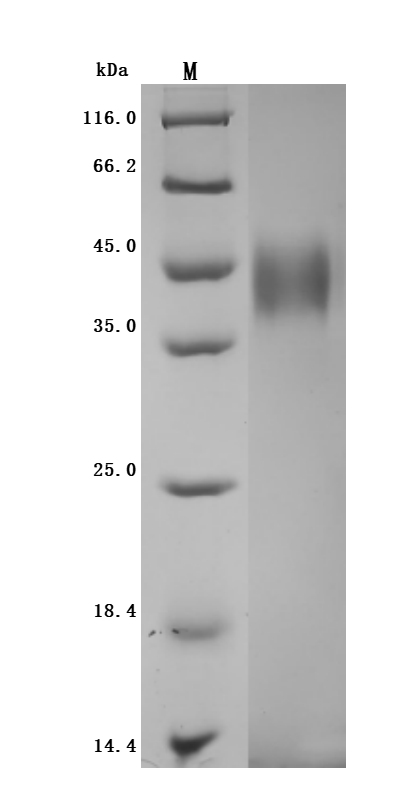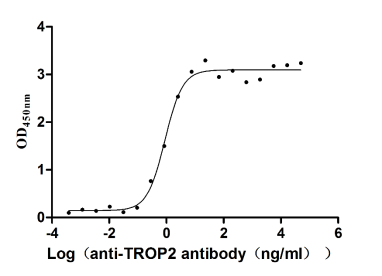This Human TACSTD2 (GA733-1, M1S1, TROP2) recombinant protein was produced in Mammalian cell, where the gene sequence encoding Human TACSTD2 (27-274aa) was expressed with the C-terminal 10xHis-tag. The purity of this TACSTD2 protein was 95%+. The activity was validated.
TROP2, also known as TACSTD2, EGP-1, GA733-1, and MIS1, is a cell surface glycoprotein encoded and expressed by the Tacstd2 gene in the chromosome 1p32 region. TROP2 belongs to the GA733 protein family and has high structural sequence similarity with epithelial cell adhesion molecule (EpCAM, also known as Tropl, TACSTD1). The homology is up to 49%. Studies have demonstrated that TROP2 may be an enhancer in the regulation of the EPCAM signaling pathway. The primary structure of TROP2 protein is a 36 kDa polypeptide composed of 323 amino acids. The primary structure is post-translationally modified by N-terminal glycosylation to form a type I cell membrane glycoprotein different from EpCAM, namely TROP2 protein. TROP2 protein is a single transmembrane protein. Its N-terminal is the extracellular domain (TROP2 EC). The extracellular domain is connected to the intracellular short tail (TROP2 IC) of a hydrophobic polypeptide consisting of 26 amino acid residues through a unidirectional transmembrane helix, thereby being fixed on the cell membrane.








